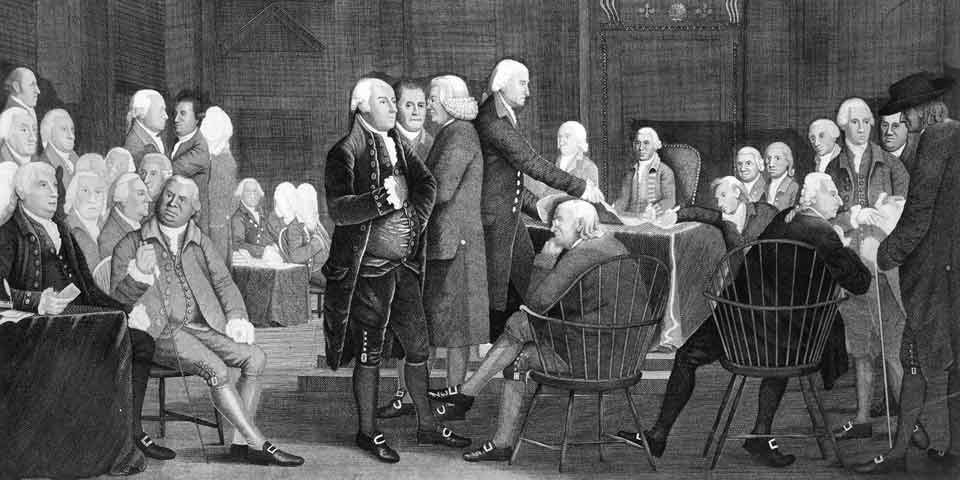In the U.S., July 4 marks Independence Day, a holiday that celebrates the adoption of the Declaration of Independence. The Declaration signaled a turning point in the movement to win political independence from Great Britain, and the eventual formation of the United States of America.
Of course, every student in the U.S. learns about Independence Day, even if the holiday falls during the traditional summer break. For educators looking to share digital resources about the holiday, its history, and its legacy, here are some great places to start. Share your other resources in the comments!
The Digital Declaration of Independence
One of the most impressive digital resources on the subject is the Digital Declaration of Independence. This interactive presentation by David McClure using Neatline Labs combines maps, the Declaration document, and art to create an information-rich way to explore the document, its history, its signatories, and the historical context of both the Declaration and the people who in it pledged their “lives fortunes and [their] sacred honor.”

This is an experimental edition of the Declaration of Independence that combines a high-resolution scan of the 1823 facsimile with a full-text transcription of the text, an annotated version of John Trumbull’s 1819 painting of the signing of the document, and an interactive map that plots the signers’ hometowns on a Mapbox base layer.
David McClure, “The Digital Declaration of Independence”
The page allows users to explore by clicking the text to automatically find relevant parts of the painting or map — or vice-versa, selecting parts of the map or painting and seeing related passages of the document highlighted.
The Library of Congress
The Library’s “Creating the Declaration of Independence” combines an overview of the document’s main ideas and meaning alongside an interactive analysis of primary sources, as students explore drafts of the document, what was cut, what was added, and why. For some advice on using the presentation, check out this article at TeachingHistory.org.
For younger learners, the LOC’s Declaration of Independence differentiated learning activity (PDF), originally published in Teaching with Primary Sources Quarterly, is designed for elementary students.
Teaching History
TeachingHistory.org, from the National History Education Clearinghouse, has also published a useful question-and-answer article regarding teaching students about the Declaration.
How might I teach the Declaration of Independence to high school students who are visual and verbal learners?
“Teaching the Declaration without Overwhelming Students,” TeachingHistory.org
Audio/Visual Resources
Part of understanding the Declaration and, in turn, the Independence Day holiday, is understanding it as more than just text on a page. In this regard, A/V resources can help, especially when students possess various learning styles and preferences.
Those looking for a game to play around the theme, check out BrainPOP’s “Time Zone X: Declaration of Independence.”
Check out videos like TED-Ed’s “What you might not know about the Declaration of Independence,” Khan Academy’s overview video “The Declaration of Independence,” or get some context on the history of the holiday with Crash Course’s “History of the 4th of July: Crash Course US History Special.”
Related Topics and Resources
Check out these posts with ideas for exploring U.S. history and government:
- Experiencing Early American History with Interactive Resources
- StoryMap JS: Creating Immersive Social Studies Education
- Understanding This Moment through Civic Education
- Exploring Civil Rights History with Digital Resources
- Using Google Earth to Follow the Trail of Lewis and Clark
- Celebrate Constitution Day with Free Digital Resources
- Digital Resources to Celebrate and Teach Juneteenth
- Digital Resources for MLK Day
Photo: National Park Service

